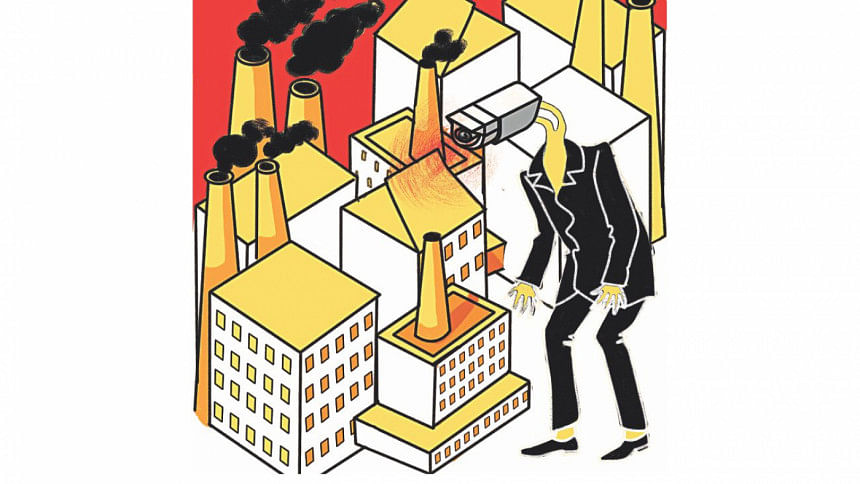“They don’t give us” - Garments workers’ rights in Bangladesh

The Tazreen factory fire in 2012 and the Rana Plaza building collapse in 2013 have, amidst all the needless destruction and devastations of lives, at least brought Bangladesh’s apparel industry under some kind of scrutiny. It paved the way for the Accord on Fire and Building Safety (ACCORD) and the Alliance for Bangladesh Worker Safety (the Alliance), two “foreign” monitoring mechanisms (according to government vocabulary) to begin their work in the country. These mechanisms provided an opportunity for collaborative work to take place between national and international multi-sectoral stakeholders such as international rights groups and civil society as well as brands and retailers.
Although unique in its scope, the idea of corporate involvement in the global production network is not new altogether. In fact, the issue of private regulation through the different corporate codes has given rise to diverse views and debates on the respective role that private and public actors should play in global production networks in general. It has provided a contrasting assessment of what effects these initiatives could and did produce.
Palpaucer (2017), for example, has noted two paradigms in this regard. On the one hand, you have the cooperative paradigm which “emphasises the beneficial nature of these initiatives”. In this view, multi-sectoral initiatives are considered to foster an evolution from confrontation toward “collaboration” between firms and civil society organisations, where NGOs facilitate the “ethical learning” of corporations. The other paradigm known as “structural power” asserts that the cooperative model lacks a mechanism to compensate for “deep inequalities” embedded in Global Production Networks (GPNs). Rodriguez-Garavito (2005: 210 cited in Palpacuer 2018: 61) points out that in the cooperative approach there is the “absence of institutional designs” for including workers as fundamental actors and worker empowerment as their central goal. Critical positions within the structural power paradigm also argue that private monitoring “institutionalises workers’ vulnerability” by “enforcing manufacturers‘ accountability for workers without those workers’ knowledge or consent” (Palpacuer 2017).
Both the Accord and the Alliance can be seen as an outcome of what may be called a cooperative paradigm where collaboration is sought between firms, civil society and NGOs. In fact, an attempt to have a legally binding document which will hold the brands and retailers responsible for the shoddy practices in their sourcing firms in the global supply chain has been a long-standing demand by some international campaign groups and rights organisations. The sad events of the Tazreen fire and Rana Plaza collapse perhaps only expedited the process.
From the sector leaders of readymade garments in Bangladesh, there is an indication that both the Accord and the Alliance have had an impact in the garments industries of the country. A good number of factories had to go through some form of remediation. These were often not welcomed by the owners and trade bodies such as the Bangladesh Garment Manufacturers and Exporters Association (BGMEA). When the Accord’s initial mandate in Bangladesh was coming to an end, it was reported in newspapers that the BGMEA was planning to bring all the “different regimes” of regulatory mechanisms under one roof, and developed a proposal accordingly for the government’s consideration and approval. While we do not know the current status of these initiatives, efforts such as these on the part of the BGMEA undoubtedly represented friction between it and the Accord administration.

The government is also under pressure from the international community. In recent years, the US embassy in Dhaka tried to play a key role so that the right to freedom of associations was made easy for the workers and all the EPZs were given the same rights and protected under common law. The EU followed suit and were on the same page when it came to ensuring workers’ right to form unions in the factory. The government tried to comply with these demands and this was exemplified in the amendments brought to the labour law in 2013. It may not be difficult to see how the government (especially the concerned ministries such as the Ministry of Commerce and Ministry of Labour and Employment) was mostly responding to various demands made through various international channels such as the EU and the US in the last few years.
Unionisation of workers is traditionally seen as the only means through which workers can secure their rights and entitlements in the factory. Many analysts of labour law in Bangladesh agree that with the current requirements of registration and its bureaucratic procedures, unionising at the factory level has become very difficult. However, it seems that the European Union is keen to push the government and relevant stakeholders to ease some of the stringent requirements of union registration in Bangladesh. Perhaps as an upshot to all this, there has been a rise of registered unions in the garments sector in recent times.
The relevant stakeholders of the sector, however, think that the mere increase of registered basic unions at the factory level itself is not an indicator of workers’ mobilisation and voice. Some think that these new unions are a kind of “pet” organisation, something of an “eye wash” for the international community. Others opine that the sudden increase in the number of trade union registrations is actually meeting bureaucratic requirements.
Outside the factory, however, there is a growing number of organisations and activist groups and platforms which are working as a pressure group to voice garments workers’ rights issues. Some of these organisations have a different “philosophy” when it comes to registration with the government. Nevertheless, these organisations and platforms have, over the years, campaigned for securing the rights and entitlements of garments workers. They played a central role in voicing demands for justice for workers whose rights have been violated due to the negligence of owners and management. Often they were key in pointing out the kind of negligence with which owners in the sector frequently try to get away with, and conducted evidence-based activism.
In the course of conducting a study amongst garments workers in Dhaka and Chittagong, we came to understand how instrumentalities related to some of the newly installed regulatory mechanisms have made workers aware of whether their factory is compliant or not—but not changed much else. Workers did not show any hope that they will get anything even if entitled by the law. “They simply don’t give” is the phrase through which workers commonly describe their dismal situation in the workplace. The situation is worse when it comes to the question of maternity rights. It is common practice for women to get fired when the question of maternity leave arises. Working mothers are asked to re-join after childbirth at best!
When talking about work conditions on the factory floor, it is not uncommon to hear about stories of corporal punishment given to the workers. On one occasion, we heard about a practice of forcing workers to wear a “garland of shoes” as a way of punishment. Innovative as it may sound but not acceptable from a labour rights perspective! Sexual harassment is rampant but the fear of losing their job is also present. Hence, a lot of these stories of harassment remain unreported. Surveillance even in the washroom is heard from the workers (the idea is that one must not spend too much time in the washroom).
Workers mainly demand better wages as the prices of essentials (consumer goods) are always on the rise. For many of them, garments work is a temporary life choice. They chose it for obhab (poverty) at home. If possible, and that is the plan for most workers, returning home and developing a small business is the preferred livelihood option. Indeed, serious inequities and hierarchical relation continue to exist in the garments factories of Bangladesh which has implications for the health, safety and wellbeing of the workers in general and female workers in particular. Hence, the need for a structural power approach cannot be denied very easily.
Mahmudul H Sumon is Professor of Anthropology, Jahangirnagar University, Dhaka Bangladesh. Can be reached at [email protected]
Reference:
Palpacuer, Florence (20019). Voluntary Versus Binding Forms of Regulation in Global Production Networks: Exploring the “Paradoxes of Partnership” in the European Anti-Sweatshop Movement. In: Prentice, Rebecca and De Neve, Geert. eds. Unmaking the Global Sweatshop: Health and Safety of the World’s Garment Workers, Philadelphia: University of Pennsylvania Press, pp. 57-86.





Comments